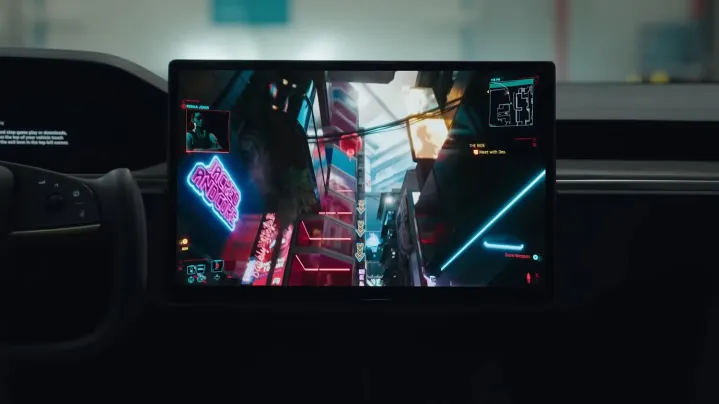
I know it sounds crazy, but a new MediaTek chip powered by Nvidia graphics promises to bring AAA gaming, ray tracing , and the coveted DLSS 3 to your car. The chips I’m talking about are MediaTek’s new Dimensity Auto Cockpit, which integrated an Nvidia GPU, along with a host of AI and gaming capabilities.
It’s not clear what Nvidia graphics are packed on MediaTek’s chips, but clearly, they’re using some variation of the Ada Lovelace architecture we see on RTX 40-series GPUs. Those are the only GPUs that support DLSS 3’s frame generation capabilities, and they’re extremely efficient — important for a chip packed into a car.
The basis of MediaTek’s new chips is a 3nm node that’s designed around the Armv9-A CPU. This chip has “deep learning capabilities,” according to MediaTek, but it sounds like the Nvidia GPU is really packing the AI hardware.
DLSS 3 is already an AI feature, but MediaTek boasts that the Nvidia graphics include a Deep Learning Accelerator (DLA), allowing you to run things like a Large Language Model (LLM) directly from the car. The chip also supports Nvidia’s full software platform, including CUDA, Drive OS, and TensorRT. MediaTek is building the chip, but it’s clear Nvidia has a big influence on it.
I won’t drop an insane amount of cash on a car that can play Cyberpunk 2077 with all the shinies. However, there are some applications here for other products.
Nvidia is showing that it can build what is essentially an RTX 40-series GPU on a small system-on-a-chip (SoC), fit with support for ray tracing and DLSS 3. That holds a lot of promise for handheld gaming devices, where Nvidia has been somewhat of a sleeping giant for the past few years.
Rumor has it that the next version of the Nintendo Switch will support DLSS and ray tracing with an Nvidia GPU. On top of that, Nvidia is reportedly worried about “missing the boat” on handheld gaming PCs, such as the Steam Deck. Up to this point, we’ve only seen AMD chips in handheld gaming PCs.
These automotive chips aren’t going to show up in a gaming device, but at the very least, they show that Nvidia can pack a modern GPU into what is essentially a mobile SoC. I’m not too excited about ray tracing and DLSS in my car — but on a Steam Deck, I’ll take it.



